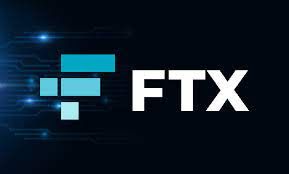Governance
The governance structure of a consortium blockchain is usually defined by consortium members and may vary depending on the specific use case and network objectives. The governance structure shall include the rules and policies for the network and the decision-making mechanism on the network.
Hybrid blockchain
A hybrid blockchain is a type oIdentify the use casef blockchain that combines the characteristics of public and private blockchains. Public blockchains are open to anyone and are decentralized, while private blockchains are usually used by organizations and are centralized. A hybrid blockchain combines the benefits of both types of blockchains, allowing both public and private participants to access the network and share information.
The access and permission level can be configured according to the needs of the participants. This means that a hybrid blockchain can be open to anyone, such as a public blockchain, or it can be limited to certain participants, such as a private blockchain. Hybrid blockchain is a new way of implementing blockchain technology that enables the best of both worlds, the transparency and immutability of a public blockchain, and the privacy and control of a private blockchain.
Blockchain consortia provide an opportunity for new members to join an existing structure and share information, rather than having to create their own from scratch
How does the Blockchain Consortium Work?
A consortium blockchain network is a blockchain managed by multiple organizations. Instead of creating their own blockchain platform from scratch, new entrants can join a consortium and help manage an already established structure and shared data. By working together to address common challenges, companies can reduce costs and speed up development time.
Finally, the coordination of actions and the exchange of expertise make it possible to avoid duplication of activities by allowing different entities to share their responsibilities. In a consortium blockchain, the number of known participants is limited, resulting in low latency and high performance, as it typically uses a voting-based system. All nodes can write and read transactions, but only a super majority of nodes can add a block. The block cannot be added if this rule is not respected.
What are the advantages and disadvantages of a blockchain consortium?
The blockchain consortium has advantages and disadvantages. On the one hand, it allows organizations to collaborate and work together on a common platform, which can lead to increased efficiency and reduced costs. On the other hand, it can also be more centralized and less transparent than public blockchain, and success depends on the willingness and ability of consortium members to work together effectively.
The advantages of a blockchain consortium include:
Increased collaboration
Consortium blockchains allow organizations with common goals to work together on a common platform, which can lead to increased collaboration and more efficient solutions.
Lower costs
By working together on a common platform, organizations can reduce the cost of developing and maintaining their own separate systems.
Greater scalability
Blockchain consortia can handle a greater number of transactions than the blockchain network of a single organization.
Improved security
The allowed nature of blockchain consortia means that only authorized participants can access the network, which can provide a higher level of security.
Governance
Blockchain consortia allow groups of organizations to set up a governance structure that allows them to make decisions and set rules for the network.
The disadvantages of a blockchain union include:
Centralization
Consortia's blockchains are usually more centralized than public blockchains, which can make them less transparent and less resistant to censorship
.
Limited accessibility
Consortium blockchains are usually only accessible to authorized participants, which means they may not be as widely adopted as public blockchains.
Reliance on the consortium
The success of a blockchain consortium depends on the willingness and ability of consortium members to collaborate and work together. If consortium members do not work together effectively, the network may not work.
Complexity
Setting up and maintaining a blockchain consortium can be complex and require specialized technical expertise.
Limited flexibility
Blockchain consortia are generally more rigid and less flexible than public blockchains, making it more difficult to adapt to changing circumstances and requirements.
Blockchain consortia allow groups of organizations to set up a governance structure that allows them to make decisions and set rules for the network
How to build a blockchain consortium?
Building a blockchain consortium usually involves several main steps:
Identify the use case
The first step in building a blockchain federation is to identify the specific use case or problem that the blockchain will be used to solve. This may include researching industry trends and identifying opportunities to use blockchain technology.
Consortium formation
Once the use case is determined, the next step is to form the consortium that will power the blockchain. This may include hiring companies and organizations that have a common interest in their use and establishing a governance structure for this union."
Choose a blockchain platform
The available blockchain platforms are multiple, such as Ethereum, Hyperledger, and EOS. The choice of platform depends on the requirements of specific use cases, such as scalability, security, and smart contract functionality.
Blockchain Development
After choosing the blockchain platform, the next step is the development of blockchain, which usually involves building smart contracts and other components that will be used to run the network.
Test the blockchain
Before implementing the blockchain, it is important to test it to make sure that it works according to its intended purpose. This may involve carrying out functional, performance and security tests.
Blockchain deployment
Once the blockchain is developed and tested, it can be offered to consortium members. This may include configuring the nodes that will manage the network, configuring the consensus mechanism, and other network parameters.
Governance
Finally, the governance structure of the network should be established and implemented. This includes setting out the network rules and policies and the network decision-making mechanism.
It is important to note that building a consortium blockchain requires a significant investment of time and resources and requires a high level of technical expertise in blockchain technology and its application.
These are just a few examples of the many blockchain consortium projects that are currently under development or are used in various industries
Some examples of blockchain consortium
These are just a few examples of the many blockchain consortium projects that are currently under development or are used in various industries. The use of the consortium blockchain is still a new field and is likely to grow in the future.
R3
R3 is a consortium of more than 200 financial institutions working on developing a blockchain-based platform for financial services called Corda. Corda is a special blockchain platform designed to facilitate secure and transparent financial transactions.
Hyperledger
Hyperledger is an open-source blockchain project that is led by the Linux Foundation. It provides a set of tools and frameworks for building blockchain applications and is used by several companies and organizations in different industries.
Energy Web Foundation (EWF)
The Energy Web Foundation (EWF) is a global non-profit organization working to accelerate the commercial deployment of blockchain technology in the energy sector. The main objective of the EWF is the development of a decentralized, open-source blockchain platform for the energy sector, called the Energy Web Chain.
Ethereum Enterprise Alliance (EEA)
The Ethereum Enterprise Alliance (SEE) is a consortium of companies and organizations developing a version of the Ethereum blockchain that is optimized for use in enterprise environments. Members of the EEA include major companies such as Accenture, JP Morgan, and Microsoft.
Tradelens
TradeLens is a blockchain-enabled digital shipping platform jointly developed by IBM and Maersk. It aims to create a more efficient, transparent and secure digital supply chain.
Private Blockchain vs. Consortium
Private blockchain and consortium blockchain are similar in many ways, but there are also some key differences between the two. One of the main differences is accessibility. A private blockchain is only accessible to authorized participants, usually within a single organization. A consortium blockchain, on the other hand, is accessible to several organizations that are part of the consortium.
Another major difference between these two is governance. A private blockchain is usually controlled by a single entity, whereas a blockchain federation is governed by a group of entities. In terms of control, in a private blockchain, the controlling entity has more powers such as controlling the network, including the ability to add or remove participants, also set rules and policies, and can make decisions about the network. In a blockchain federation, control is divided among the federation's members, and the decision-making process is usually more fair and democratic.
A consortium blockchain is more secure than private blockchain but less secure than public blockchain
Transparency is another aspect that makes each of these two different from the others. Private blockchains are less transparent than public blockchains but more transparent than blockchain federations. Federation chains are more transparent than private chains, but not as transparent as public chains
Decentralization is another aspect that differs between private blockchains, federations, and public. Private blockchain is usually more centralized than a public blockchain, but less centralized than a blockchain consortium. A blockchain consortium is more decentralized than a private blockchain but less decentralized than a public blockchain.
Finally, security is another aspect that can be taken into account. A private blockchain is generally more secure than a public blockchain because access is limited to authorized participants. The blockchain consortium is more secure than the private blockchain but less secure than the public blockchain.
Final Words
Blockchain consortia are becoming increasingly important in today's business environment as more and more organizations look for ways to use blockchain technology to improve efficiency and security. Consortium blockchains allow organizations with common goals to work together on a common platform, which can lead to increased collaboration and more efficient solutions. In addition, they can be used to develop shared platforms that can be used for a number of purposes, such as the creation of a shared supply chain management system or a decentralized digital identity system. As blockchain technology continues to evolve and more and more organizations begin to adopt it, consortia blockchains will likely play an even more important role in the business world.










